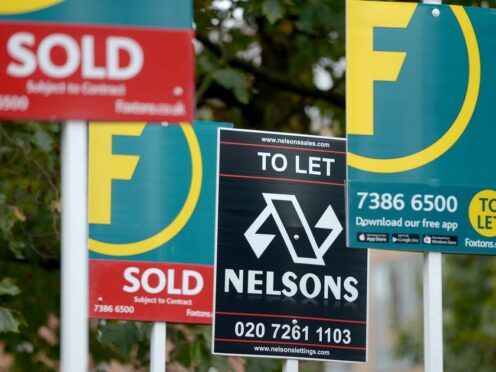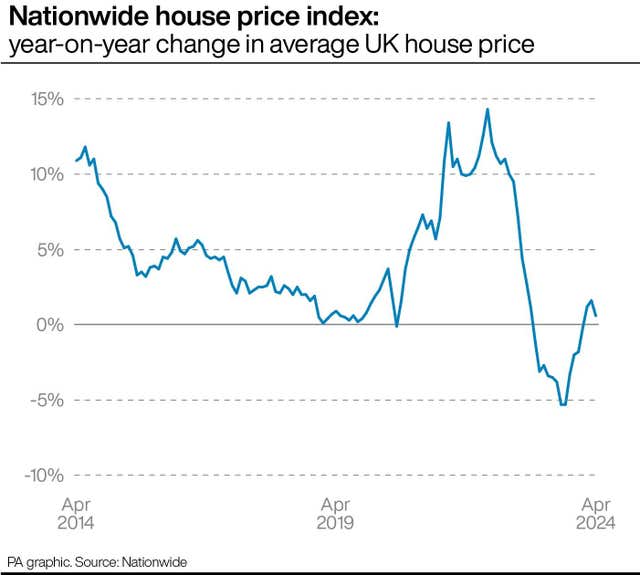
The average UK house price fell for the second month in a row in April, with property values now sitting at around 4% below their all-time highs typically, according to an index.
UK property prices fell by 0.4% month-on-month in April, following a 0.2% fall in March, Nationwide Building Society said.
The annual rate of house price growth more than halved in April, to 0.6%, from 1.6% in March.
The average UK house price in April was £261,962.
Robert Gardner, Nationwide’s chief economist, said the slowdown “likely reflects ongoing affordability pressures”.
He said: “House prices are now around 4% below the all-time highs recorded in the summer of 2022, after taking account of seasonal effects.”

Recent research by Censuswide on behalf of Nationwide indicated that nearly half (49%) of prospective first-time buyers looking to buy in the next five years have delayed their plans over the past year.
Mr Gardner continued: “Buying a property in a less expensive area appears to be the most common compromise that prospective buyers will make.
“Around a third (32%) said they would consider a smaller property than they wanted, while 28% would go for a property that needed work doing.
“Amongst recent first-time buyers (those who have bought their first home in the past five years), 38% said they ended up compromising on the property they purchased.”
Sam Mitchell, chief executive of Purplebricks, said: “There is still positive sentiment from buyers and we are seeing viewing activity increase, signalling stability in the housing market.
“While several banks have slightly increased mortgage rates, there has also been an increase in new market offerings, both have sparked buyers into action which has resulted in more sales.”
Tom Bill, head of UK residential research at estate agent Knight Frank, said: “There are added financial pressures in the system as a wave of owners roll off sub-2% mortgages agreed in early 2022.
“We believe demand and house price growth will pick up later this year as a rate cut moves on to the horizon.”
Jeremy Leaf, a north London estate agent, said: “We are not surprised by the small drop in property prices.
“The increase in listings is resulting in more choice for buyers and some heavy negotiations on the ground which means only realistic sellers are proving successful.
“However, underlying demand is much more resilient than it was a few months ago, coinciding with the stronger spring market.”
Peter Arnold, EY UK chief economist, said: “The lenders’ house price series can be volatile from month to month, particularly in times when transaction levels are relatively low, making it harder to mix-adjust the data.
“Just as the apparent strength in January/February looked out of keeping with fundamentals, the latest data is unlikely to mark the start of a renewed fall in property prices.”
Nicky Stevenson, managing director at Fine & Country, said: “The property market remains highly changeable, with prices up slightly one month then falling back the next.
“Although demand continues to pick up nicely with mortgage approvals rising, the economy remains in a fragile position.”

Enjoy the convenience of having The Sunday Post delivered as a digital ePaper straight to your smartphone, tablet or computer.
Subscribe for only £5.49 a month and enjoy all the benefits of the printed paper as a digital replica.
Subscribe